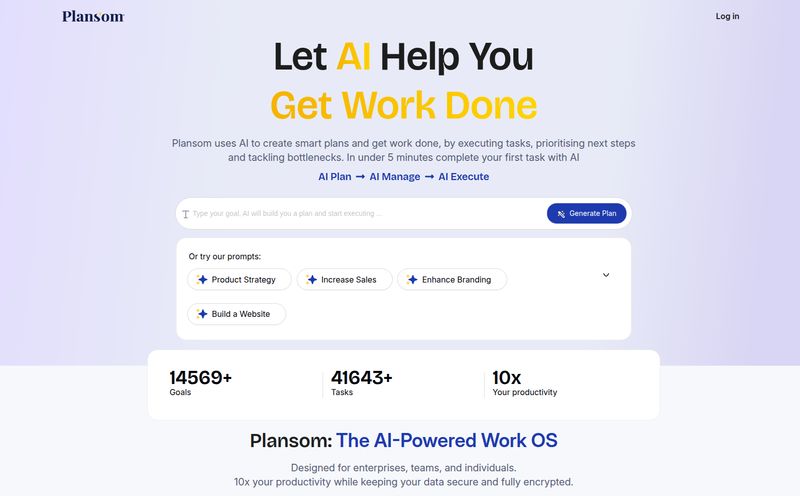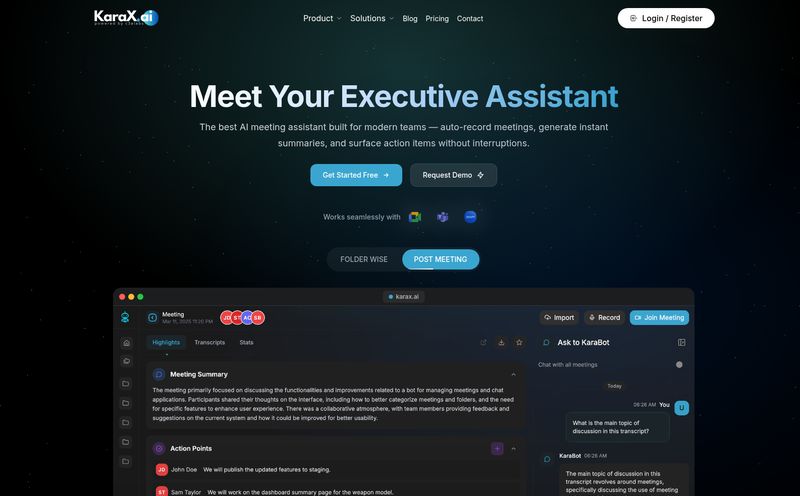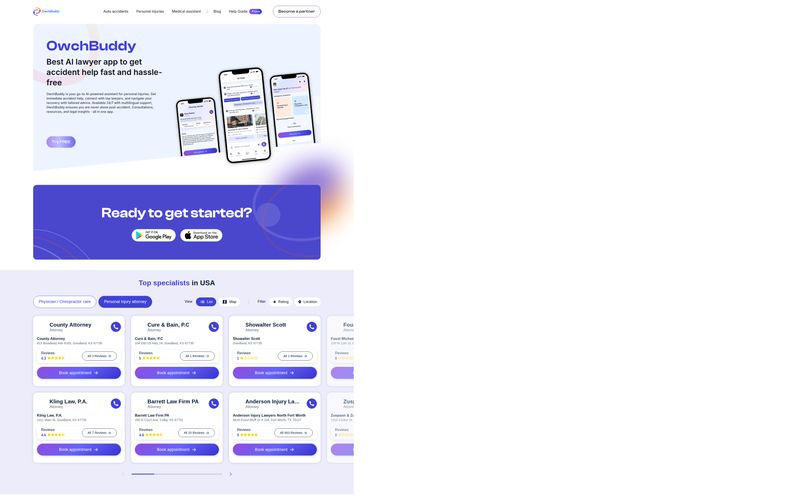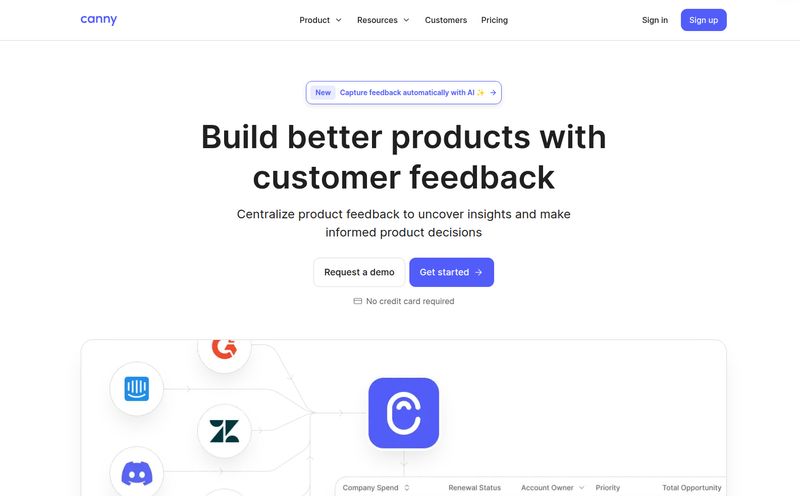I’ve been in the SEO and digital process game for a long time. Long enough to see buzzwords come and go like seasons. Remember 'synergy'? 'Growth hacking'? Yeah. So when a new term like 'hyperautomation' starts making the rounds, my cynical old-man-in-the-industry senses start tingling. It sounds like something a marketing team cooked up after three espressos. But every so often, a platform comes along that actually... well, lives up to the hype.
I stumbled upon ROK Solution recently. Their homepage hits you with some pretty audacious claims. Orchestrated hyperautomation. Unmatched governance. Zero manual cases. And the real kicker: building an enterprise-grade app from design to run in one minute and thirty seconds.
Right. My first thought? 'Pull the other one'. But I’ve learned not to dismiss things out of hand. Sometimes the biggest claims hide the most interesting tech. So, I put on my analyst hat, pushed my skepticism aside (mostly), and decided to see what ROK Solution is really all about.
First, What on Earth is Hyperautomation?
Before we get into ROK, let's clear this up. Hyperautomation isn't just setting up a simple IFTTT (If This Then That) rule. It's not just your basic Robotic Process Automation (RPA) bot filling out a form. Think of it as the next level up. It’s about creating a business-wide nervous system by intelligently combining a whole suite of technologies – Business Process Management (BPM), RPA, artificial intelligence (AI), and low-code/no-code platforms. The goal isn't just to automate a single task, it’s to orchestrate entire, complex business processes from end to end. It's ambitious stuff.
So, What's ROK Solution's Big Idea?
ROK Solution throws its hat into this very complex ring by trying to be the all-in-one conductor for this entire orchestra. Instead of buying a separate tool for workflow, another for RPA, and yet another for security and praying they all talk to each other, ROK aims to bundle it all together. Their whole pitch is built on a unified platform where you can design, build, run, and secure your business applications without the usual Frankenstein's monster of software integrations.
They’ve got some big names on their site—HSBC, Atos, Infor—which tells me they're not just playing around. This isn't a startup in a garage; this is a platform built for serious enterprise challenges.
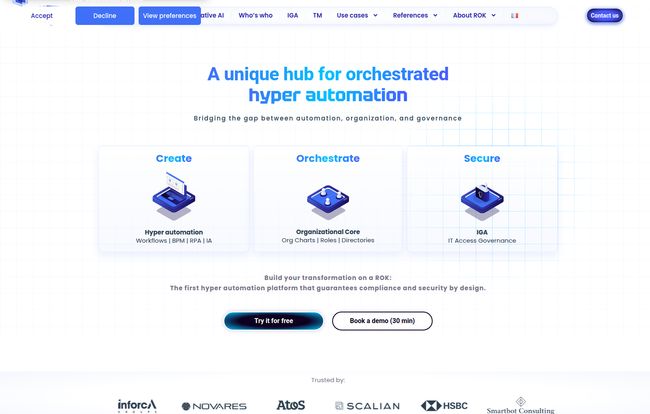
Visit ROK Solution
The Generative AI Magic Trick
Okay, let's talk about that 'app in 90 seconds' thing. This is where the Generative AI comes in. We’ve all seen what Gen AI can do with text and images, but ROK is applying it to application development. The idea is that you can describe the business process you need in plain language, and the AI will generate the underlying application, workflow, and user interfaces.
Is it truly a one-click-and-done solution for a complex banking app? Probably not. Let’s be realistic. But for creating internal tools, onboarding processes, approval workflows, or data management apps, this could be a massive time-saver. Think about the weeks of back-and-forth between business departments and IT. This promises to shred that timeline. It’s less about replacing developers and more about empowering business analysts and process owners to build what they need, now. A very tempting proposition.
The Four Pillars Holding Up the ROK Platform
From what I can gather, the platform is built on four core modules that work together.
1. The Hyperautomation Engine
This is the heart of it all. It’s the workflow, the BPM, the RPA. It's where you design how work gets done, who it goes to, and what happens next. It's the 'automation' part of hyperautomation, but designed to connect everything else.
2. Who's Who (Dynamic Org Charts)
At first, this sounded like a glorified contact list. I was wrong. I once worked at a company where a manager left, and it took IT three weeks to untangle all their permissions and reroute approvals, causing total chaos. ROK's 'Who's Who' is a living, breathing organizational chart that’s directly tied to the automation engine. Someone changes roles? The system automatically knows who their replacement is, what they need access to, and who should now approve their team's expense reports. It turns the org chart from a static document into a dynamic driver of the business. Genius, really.
3. IGA (Identity Governance & Administration)
For me, this is ROK’s ace in the hole. In a world of constant data breach headlines and regulations like GDPR and CCPA, security can't be an afterthought. Most automation platforms require you to bolt on a separate Identity and Access Management (IAM) solution. ROK builds it right in. This means you can manage not just what gets automated, but who can initiate, approve, or even see a process, all within the same environment. For any CISO (Chief Information Security Officer), this is a dream. It moves security from being a gatekeeper to being an integrated part of the process fabric.
4. Team Management (TM)
This module seems to tie everything together at a project level. It allows you to create teams, assign roles, and manage tasks within the context of the automated processes you've built. It’s the collaborative layer that ensures the humans in the loop are working efficiently alongside the bots and automated workflows.
So, Who Should Be Looking at ROK?
This is definitely not a tool for a small blogger trying to automate their social media posts. Based on their case studies and feature set, ROK is squarely aimed at medium-to-large enterprises. Think organizations with complex, siloed processes and high stakes. Financial institutions, government agencies, large-scale manufacturing, and automotive industries are mentioned specifically. These are places where a single mistake in a process can cost millions or create a massive compliance nightmare. The heavy emphasis on security and governance makes it a natural fit for these regulated environments.
If your company is still running critical operations on a tangled web of spreadsheets, emails, and outdated legacy systems, ROK is likely screaming your name.
The All-Important Question: What's the Price?
Enterprise software pricing can be as clear as mud. Often, you have to sit through three demos just to get a ballpark figure. Refreshingly, ROK Solution is pretty upfront about getting you started. Their site prominently features a Free Trial. You can sign up and actually kick the tires on the platform, test the Generative AI, and visualize workflows without having to commit. I always see this as a sign of confidence from a vendor. They believe that once you see what it can do, you'll be sold. For full enterprise pricing, you'll likely need to contact their sales team, which is standard for a platform this comprehensive.
Any Downsides? Let's Be Honest.
No tool is perfect. And a platform this powerful will inevitably have a few trade-offs. The first is the potential for a learning curve. While the no-code aspect makes it accessible, mastering the orchestration of complex, cross-departmental processes will take some time. Secondly, the advanced security features, while a huge pro, could add a layer of complexity to the initial setup. You need to know what you're doing to configure identity governance properly. Finaly, like any platform, some of its most powerful features will depend on how well it integrates with your existing tech stack. You'll need to check if its connectors play nice with your current systems.
My Final Take on ROK Solution
I came in skeptical, but I’m leaving impressed. ROK Solution is making a bold play to not just automate tasks but to provide a unified, secure foundation for digital transformation. The integration of Generative AI for rapid application development is genuinely exciting and could change the dynamics of how IT and business teams collaborate.
But the real standout feature for me, the one that makes it more than just another automation tool, is the built-in Identity Governance. In today's climate, building on a secure foundation isn't just a feature; it’s a necessity. ROK seems to understand this better than most. It’s an ambitious, powerful platform that seems poised to make some serious waves. If you're struggling with process chaos, it’s definitely worth spinning up that free trial.
Frequently Asked Questions
1. What exactly is hyperautomation?
It's the idea of using a combination of technologies (like AI, RPA, and BPM) to automate and orchestrate as many business processes as possible. It's a more holistic approach than just automating single, simple tasks.
2. Is ROK Solution a true "no-code" platform?
It operates as a no-code/low-code platform. This means that for many applications and workflows, you can build them using a visual interface with no programming needed. For more complex integrations or custom logic, some 'low-code' scripting might be required, but the goal is to empower non-developers.
3. How does the Generative AI feature actually build applications?
You describe the process or application you need using natural language. The AI then interprets your request and generates the corresponding data models, user interfaces, and workflows. You can then review and refine what the AI has created using the no-code editor.
4. How secure is the ROK platform for regulated industries?
Security appears to be a core pillar of the platform. By integrating Identity Governance and Administration (IGA) directly, it offers granular control over user access, permissions, and data security, making it well-suited for industries with strict compliance requirements like finance and government.
5. How can I get started with ROK Solution?
The best way to start is by signing up for their free trial on their website. This allows you to explore the platform's capabilities firsthand and see if it's a good fit for your organization's needs before making any commitment.
